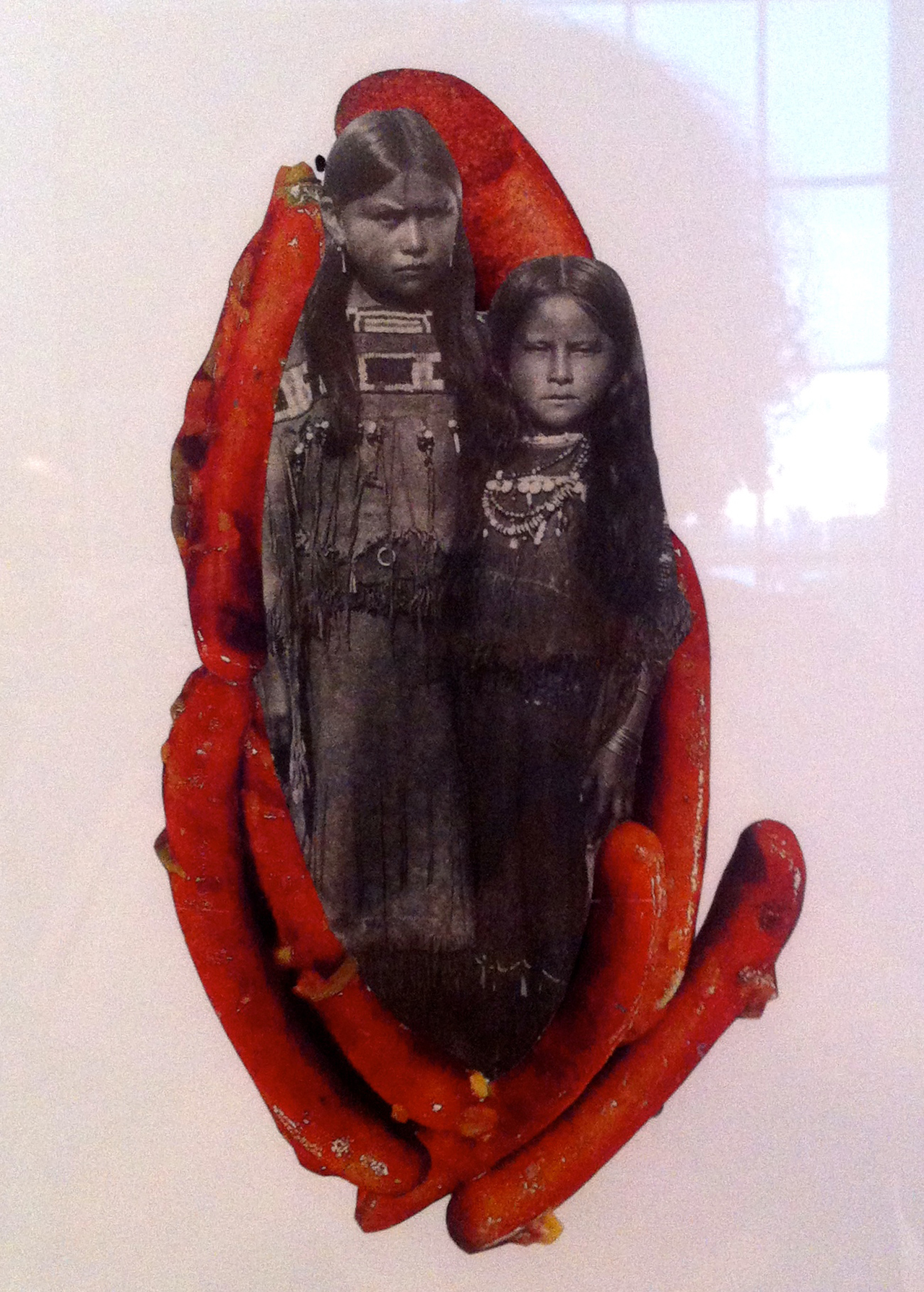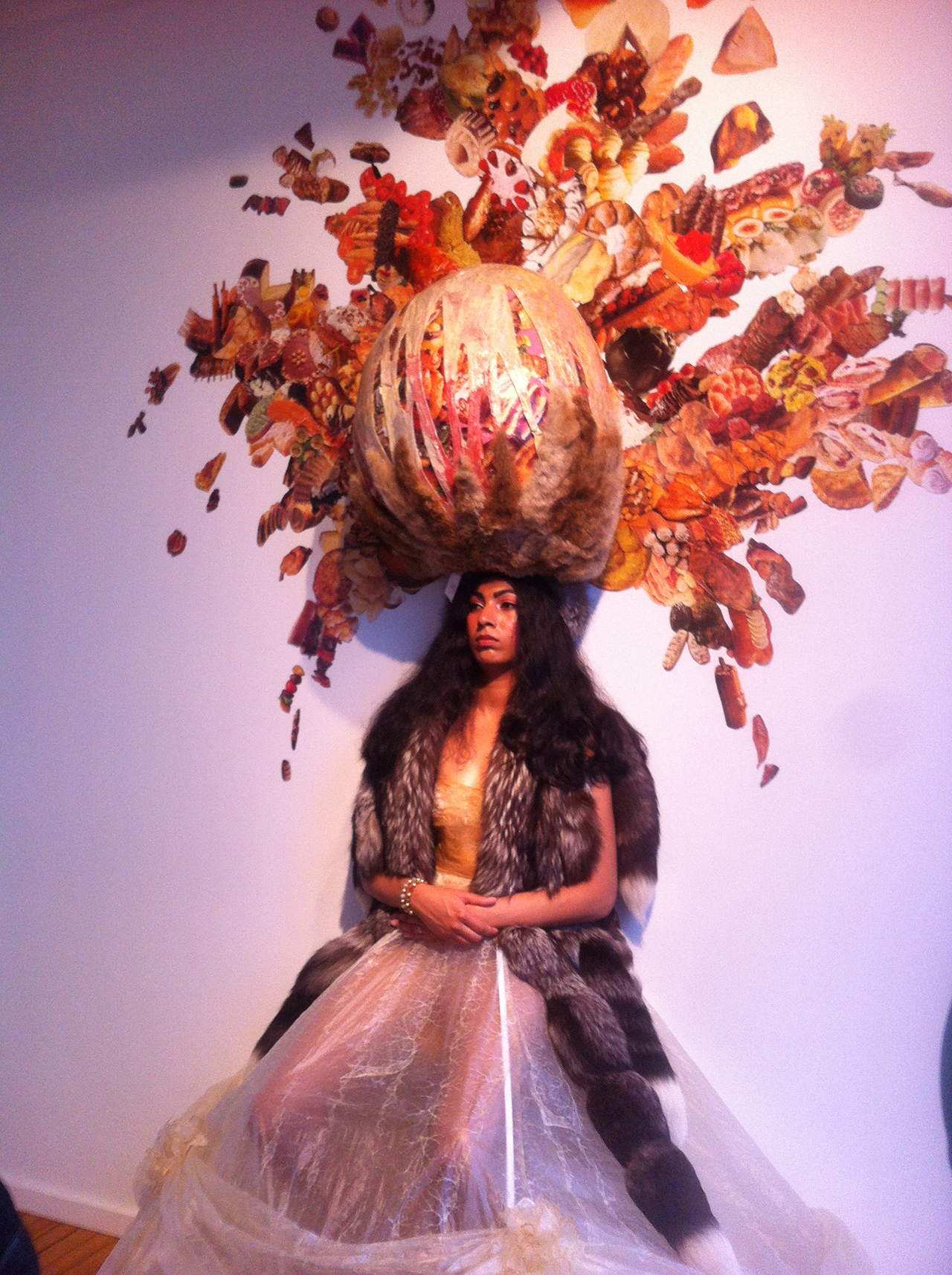
Gutsy work by Cristin Richard at Playground Detroit
Photo: “Ripe Pickings (large)” (left) and a trio of smaller sculptural works by Cristin Richard.
There are a number of ways to make art that is visceral and gripping. In a new body of work being presented at Playground Detroit, Cristin Richard takes a direct approach; she uses literal viscera as her starting point.
Working with animal casings—translucent skins that are used to make sausages, dried to a thin, wax paper-like texture—she has generated an installation that is at turns delicate and disturbing. The impact of these pieces on a physical level is intensified because the materials are deftly formed into into shapes that inherently function as visual synecdoche for bodies: empty shoes, braids of hair, legs.

“Lost Innocence,” mixed media collage by Cristin Richard.
Accompanying her casing sculptures is a series of meat collages, which juxtapose florid images of meat with black-and-white pictures of First Nation individuals, typically in traditional dress. Richard said her inspiration for the animal casings emerged as a result of learning about the Inuit practice of creating waterproof clothing from seal intestine.
Richard is consciously dealing with the concept of waste with these works, citing the Inuit cultural practice of utilizing an entire animal that has been killed for food, versus the highly wasteful approach taken by Americans to their food chain. In a dynamic multimedia piece, an amorphous, obese, headless and vaguely female figure sits in an armchair, continuously inflating and deflating, in front of a block of TV screens with a mélange of imagery mirroring the shows’ themes. The relationship between meat as food, meat as bodies and meat as waste seems to coalesce most powerfully in this piece, as well as in a hanging piece called “Leftovers,” which resembles a giant abstract piñata, presumably made of Richard’s repurposed waste materials.
In her explorations of various cultures, Richard has discovered Inuit roots of her own, a revelation that both simplifies and complicates issues of cultural appropriation that are an inevitable question in work of this nature. This question is perhaps best epitomized by the live performance aspect of Richard’s opening: a wall installation featuring a collaged headdress and casing skirt was occupied by a model who seems to bear a more visibly direct First Nation lineage than the ostensibly white Richard.

Model Samia Ahmed, part of the opening night installation of Cristin Richard’s work at Playground Detroit.
Seated atop a stool, largely impassive and immobile, this woman—model Samia Ahmed, with whom Richard has collaborated in the past—was basically displayed as a piece of living art. The interspersion of a literal body in the collection of implied bodies within Richard’s work is disturbing, in and of itself, as are the aesthetics of a person arrayed in meat and skin. But when it comes to using another person’s body as a piece of art, there is perhaps another layer of implication that requires deeper consideration.
Overall, it’s an ambitious and very affecting collection of works, bearing all the hallmarks of an artist engaged in the process of mastering an intense (and intestinal) medium. Art like this takes guts.
Recent Content
-
Artsarticle ·
-
Artsarticle ·
-
Artsarticle ·

